Author: Adam Bunker
Subject Matter Expert: Dave Pabley
What are customer service KPIs?
Customer service KPIs (Key performance indicators) are means of tracking improvement over time when it comes to your business’s customer support and customer service offerings. In practice, that means monitoring a specific set of metrics that work together to paint an overall picture of service performance.
Let’s think about what KPI stands for. What can actually indicate the performance of a given service or department? To answer those questions for customer service teams, you just need to think logically about what success would look like:
- Customers are satisfied with the service they receive
- Customer issues are resolved quickly
- Customers don’t have to spend a long time waiting to speak to someone
- Customers issues are fully resolved quickly and satisfactorily
With that as an outline plan, you can start to think about all the customer service metrics you already measure and pick out the ones that directly relate to or inform it. Those specific metrics will be your customer service KPIs.
Free eBook: Discover the future of contact centers
Customer service metrics vs customer service KPIs
So, hold up… What’s the difference between metrics and KPIs? After all, we already have an article listing the customer service metrics you should be tracking.
The simple answer is that metrics and KPIs are closely related, but not synonymous. While metrics track all the various characteristics of your service, KPIs are the ones you focus on to try and build tangible performance improvement. In that sense, KPIs are all about tracking specific business goals.
Think of it this way: if you want to get good at chess, you might read a book all about chess strategies and memorize all the moves you can do in various situations. But in the heat of a match, you only need to think about the strategies and moves that will help you win, based on what’s on the board.
Metrics are the whole chess book, here – everything you can track to measure customer service performance – while customer service KPIs are the specific moves to focus on.
Why are customer service KPIs important?
Tracking metrics is always useful, but identifying which ones deserve to be your core customer service KPIs is crucial if you want to improve your level of service.
And, in today’s business environment, doing that is super important. Customer expectations are such that poor customer service will cost you not only their business, but the business of their peers – while great customer support can lift you head and shoulders above your competitors.
Forrester’s research, for example, found that businesses can nearly double their revenue growth by focussing on customer-first improvement, while Gartner suggests that the customer experience is now the key battleground for leading organizations.
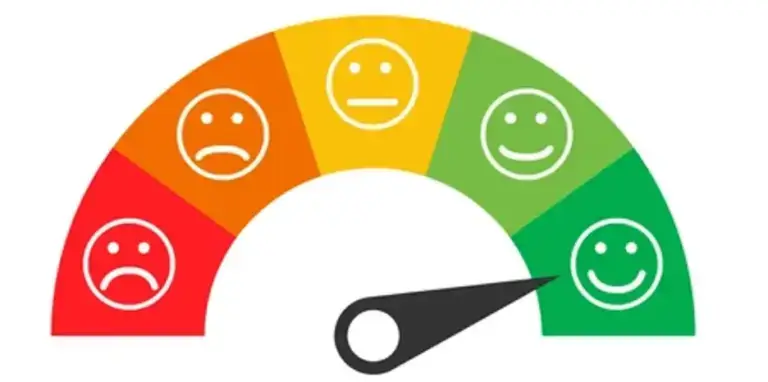
On the customer side, improvement in CX and support can make a huge difference. Zendesk reports that 73% of consumers will switch to a competitor after several bad experiences, while almost the same number will choose to spend more with a brand that excels in CX.
Hyken backs this up, with findings that almost nine out of ten customers will switch brands in search of better customer experience.
All of this means that customer retention, loyalty and repeat purchases are at stake – something that can have a huge effect on your bottom line. Forrester, for example, points out that just a 5% in customer retention can increase profitability by around 25%.
The 5 most important KPIs in customer service for performance results
As mentioned, we have a full list here of all the metrics you can (and should) be tracking when it comes to customer service, but what if you really want to make a positive impact on customer satisfaction? How can your customer service team ensure that performance is moving in the right direction?
Here’s how and why the most important customer service KPI measurements can lead to impactful CX gains:
KPI #1: Reduced Average Handling Time (AHT)
What is it?
Average Handle Time (AHT) is the average time it takes for your customer service team to handle a customer interaction, from the beginning to the end. This includes the time spent talking to the customer, researching their issue, and any follow-up necessary.
Why is it important?
Reducing Average Handle Time is crucial for enhancing operational efficiency and customer satisfaction. A shorter AHT indicates that your customers’ issues are being resolved quickly, leading to higher productivity and reduced costs. It should come as no surprise that customers generally prefer faster issue resolution – get your handling time down and it’ll make a big difference to the overall customer experience.
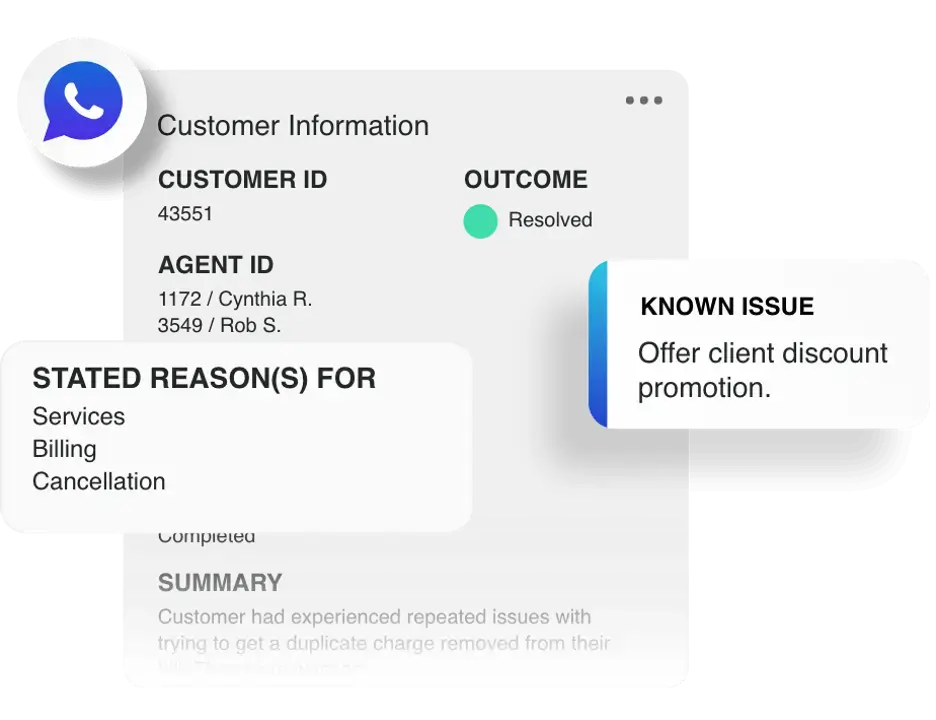
How to measure it?
AHT is measured by adding the total duration of all customer interactions and dividing it by the number of interactions during a specific period. This can be measured daily, weekly or monthly, or over any other time period depending on how you track your KPIs.
How to improve it?
Improving AHT relies on implementing better training for customer service representatives, streamlining processes, providing better tools and resources, and optimizing your use of technology to automate routine tasks. With better processes in place, you’ll avoid situations where interactions last longer than they need to.
KPI #2: First Contact Resolution (FCR)
What is it?
First Contact Resolution (FCR) measures the percentage of customer issues that are resolved during the initial contact with customer support, without the need for the customer to follow up or contact support multiple times. This is also sometimes reported as First Call Resolution.
Why is it important?
FCR is important because it directly correlates with customer satisfaction. Resolving issues during the first interaction not only saves time for both customers and support staff, but it also enhances the overall customer experience by reducing frustration – which will inevitably lead to an increase in customer satisfaction scores.
How to measure it?
FCR is measured by dividing the number of issues resolved on the first call by the total number of customer issues, then multiplying by 100 to get the percentage. This can be measured over specific time frames in order to see how things are improving.
How to improve it?
Improving FCR is a similar task to improving AHT. It relies on the right mix of tools, training and processes to help your customer support team feel empowered enough to solve issues in the moment. Additional tools and strategies like building a comprehensive knowledge base, fostering collaboration across teams, and implementing AI-driven automation solutions can all help streamline issue resolution.
KPI #3: Reducing Hold Time
What is it?
Hold Time measures the average amount of time customers spend on hold while waiting to connect with a customer service representative – this is traditionally related to phone calls, but it can also include wait times on digital tools like live chat.
Why is it important?
Reducing hold time stops customers from getting frustrated, giving up, and taking their business elsewhere. Most customers today expect a near-instant response, so leaving them languishing on hold will only foster dissatisfaction, negatively impacting the overall perception of your customer experience.
How to measure it?
Hold time is measured by calculating the average time customers spend on hold during a specific period. This can be tracked in real-time or over a set timeframe using contact center management software.
How to improve it?
To reduce hold time, you’ll need to optimize staffing levels and call-routing strategies, as well as implement self-service options that can help reduce the overall number of calls by helping customers help themselves. Alongside that, AI-powered contact center tools can help automate some of the more time-consuming post-call work, helping free up agents for calls.
KPI #4: Reducing transfers and escalations
What is it?
Transfers and escalations measurements monitor the frequency with which customer service representatives need to send customer issues to other departments or higher-tier support. The higher the number, the more frustrated customers might become.
Why is it important?
Minimizing transfers and escalations is really important when it comes to providing efficient customer service. Alongside customer frustration, an excessive amount of transfers will lead to prolonged issue resolution times, which in turn will reduce the overall volume of customer queries you can handle.
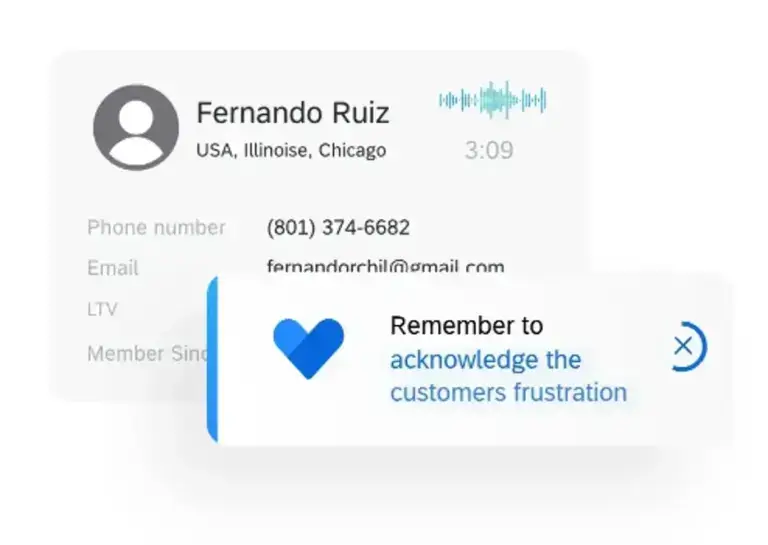
How to measure it?
This KPI is measured by calculating the percentage of calls that require transfers or escalations out of the total number of customer interactions. So that’s the number of transfers, divided by total calls or contact interactions, multiplied by 100.
How to improve it?
As with First Contact Resolution, the answer here is all about empowering agents so that there’s no issue they can’t solve during that initial interaction. Often that means implementing robust training programs, building a comprehensive knowledge base, and using AI tools that can provide agents with insights and next steps during each support query..
KPI #5: Reducing Customer Effort Score (CES)
What is it?
Customer Effort Score (CES) is a metric that measures the ease with which customers get their issues resolved. It reflects how much effort a customer had to exert to achieve a resolution, helping to clue customer support teams in on how easily common issues are fixed. It’s a wide-reaching metric as ‘effort’ can refer to everything from the act of getting in touch to the ease of actually having an issue solved.
Why is it important?
Reducing your Customer Effort Score is how you’ll build long-term customer satisfaction and customer loyalty. Customers who find it easy to resolve their issues are more likely to remain loyal and have a positive perception of the brand, which will result in lower churn and a higher chance of repeat purchases.
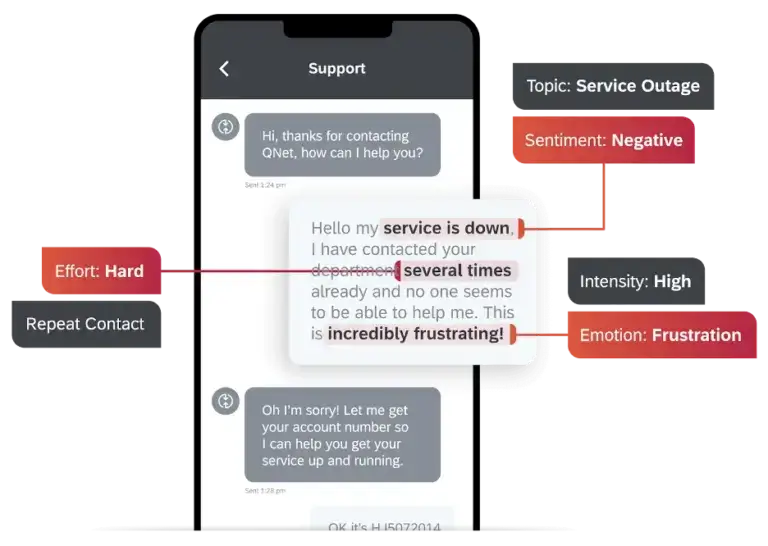
How to measure it?
CES has traditionally been measured through post-interaction surveys where customers are asked to rate the ease with which their issue was resolved on a scale. Modern contact center management suites with natural language processing, however, are now able to detect and measure effort automatically based on the live content of calls, emails and instant message chats.
How to improve it?
Reducing Customer Effort Score means listening to what customers are saying and making changes before there’s a risk of reputational damage. If, for instance, you have the tools in place to detect a recurring pattern of high effort around a billing issue, or long hold times, you need to be proactive in fixing those issues.
Insights and tools to improve customer service KPI metrics
As you’ll no doubt have gathered, there are some common themes when it comes to making improvements to the most common customer service KPIs. Having the right processes and tools on your side can do a lot of the heavy lifting for you, which makes the somewhat daunting task of driving up customer satisfaction from the contact center a much simpler task.
At Qualtrics, we believe that technology is a massive enabler for customer experience excellence because it complements human agents in powerful ways – rather than replacing them. Here are three core technologies that can help lift any customer service KPI in no time:
Conversation analytics
If you can automatically listen to and track what’s being said across calls, emails, texts, instant messages and social media posts, you can start to spot patterns that manual sampling just can’t. Often, conversation analytics with Natural Language Processing (NLP) will show you stumbling blocks that multiple, otherwise disparate customers are running into, and help you make adjustments – like upskilling agents around specific issues or adding more staff at certain times of the day.
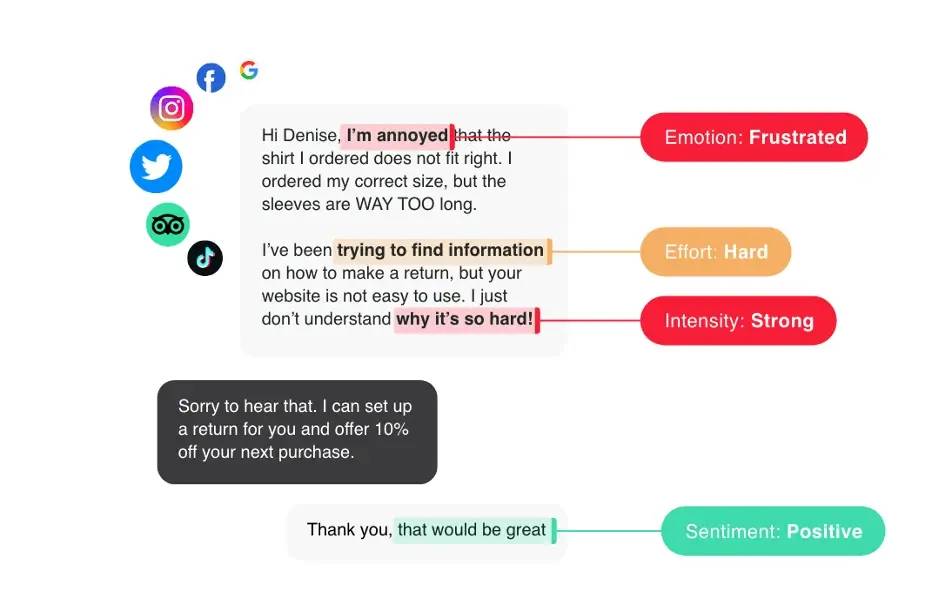
Real-time AI-assist
Alongside the ability to help alleviate time-consuming post-call work, AI can also help agents deliver empathy while also driving down average resolution time and other key metrics thanks to real-time prompts. By listening in on calls and chats, AI can surface useful knowledge base articles, deliver insight-driven discounts, or simply remind agents about important customer history details.
Agent coaching tools
Training and coaching play a huge part in ensuring your contact center is delivering top-notch customer service. But manually sampling calls is a really inefficient way to check on quality and consistency. Again, AI can help here by listening in on calls and – in real time – perform script compliance and issue resolution monitoring.
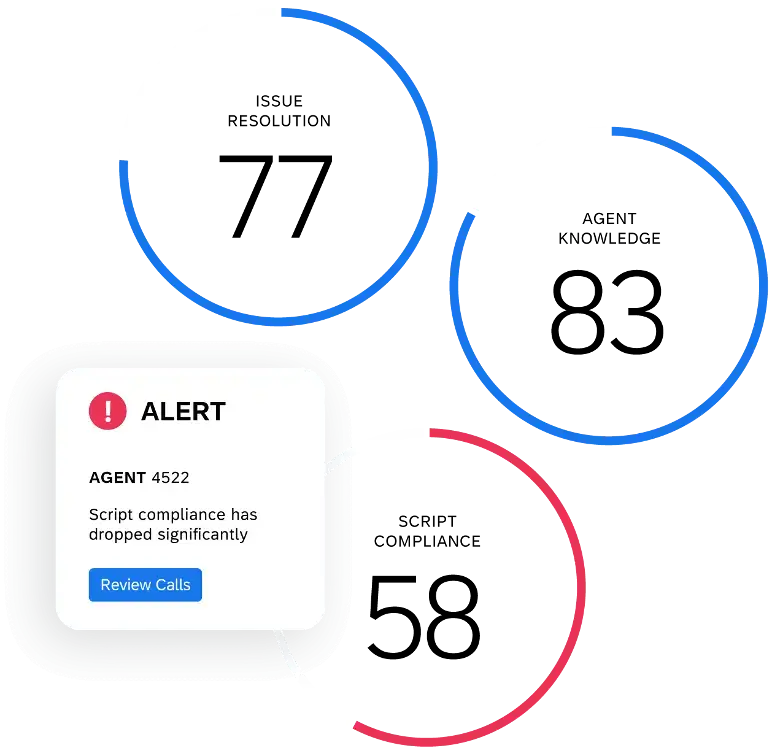
With Qualtrics’ contact center management tools, you can even automatically schedule coaching sessions that will help you build a more engaged, empowered team – one full of agents with all the skills needed to make their mark on your most important KPIs.
Free eBook: How to get your customer service right, every time